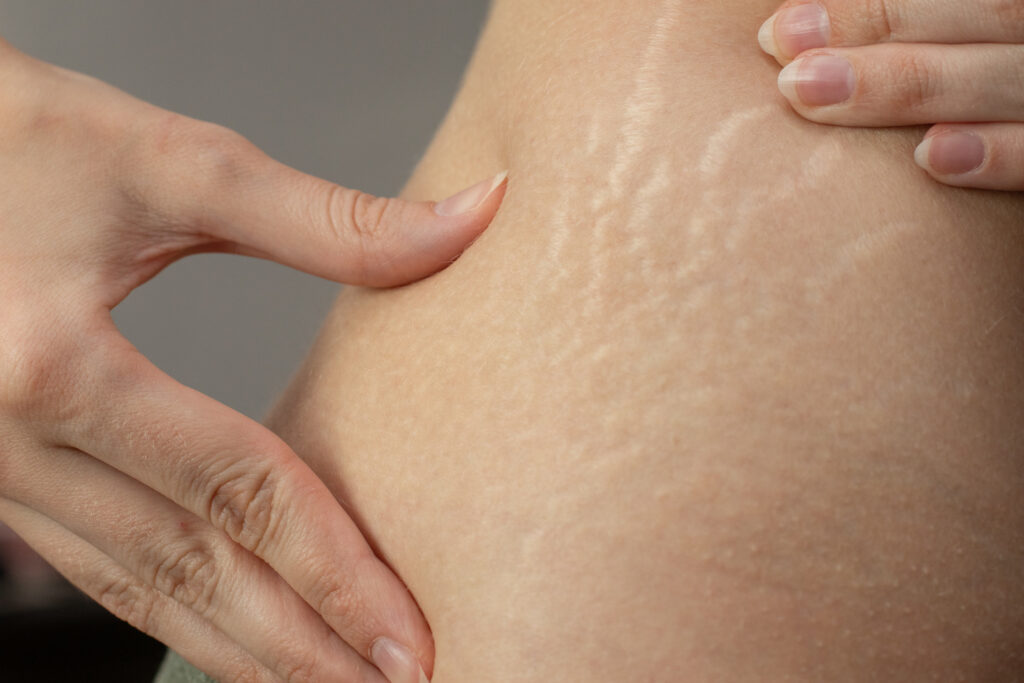Stretch Marks
Stretch Marks

Stretch marks, also called striae, are thin red lines that appear on the skin of the thighs, abdomen, or breasts. A thinning of the skin, usually brought on by changes in skin elasticity, causes them. Over time, the red lines fade from purple to silver-white.
Stretch marks develop when the skin is excessively stretched, damaging the collagen fibers and proteins in the underlying skin layer called the dermis. Scientists believe that shattering of collagen leads to dilation of small blood vessels (called capillaries) that results in red or purple-colored early stretch marks. Inflammation and collagen remodeling may lead to the loss of pigment producing, melanocyte cells or obscuring of melanin pigment. Over time, this lack of pigment results in the white or hypopigmented scars that most people associate with mature stretch marks. Stretch marks are a form of leukoderma.
Growth spurts and sudden or excessive weight gain cause stretch marks to form in young people. Young women commonly get them on their breasts, thighs, hips and buttocks. Young men often develop stretch marks from participating in certain body-altering sports such as weightlifting or from the use of dangerous bodybuilding steroid drugs. Women commonly develop stretch marks on their lower abdomen in the last months of pregnancy. Hormonal changes and stretching of the skin during pregnancy and adolescence are thought to cause the skin to become thinner and more vulnerable to stretch marks. About 90% of women develop stretch marks during pregnancy. Pregnancy related stretch marks tend to be more prominent with greater weight gain, are red-purple when new, and become lighter than normal skin several months after delivery; they often fade with time.
There is nothing that can prevent the formation of stretch marks — especially during pregnancy or during a growth spurt. Creams and lotions may ease the itchy sensation associated with stretch marks, but they won’t keep them from forming.
Stretch marks that are purple also develop in people who have Cushing syndrome.
At our facility we offer an effective laser-based treatment to fade away stretch marks. During the consultation session we suggest the specific treatment course for your case.
